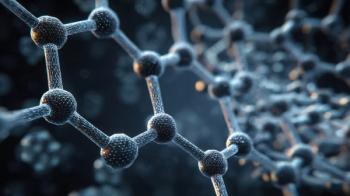
Determining Organic Contaminants in Wastewater with LC-MS
A joint study conducted by the University of Modena and Reggio Emilia (Modena, Italy) and the University of Genoa (Genoa, Italy) aimed to optimize a liquid chromatography mass spectrometry (LC-MS) method using a zwitterionic phosphorylcholine hydrophilic interaction liquid chromatography (HILIC) column for detecting persistent and mobile organic contaminants (PMOCs) in wastewater. LCGC International spoke to researchers Caterina Durante (corresponding author of the piece) and Samuele Pellacani about their method and the results yielded.
A joint study conducted by the University of Modena and Reggio Emilia (Modena, Italy) and the University of Genoa (Genoa, Italy) aimed to optimize a liquid chromatography mass spectrometry (LC-MS) method using a zwitterionic phosphorylcholine hydrophilic interaction liquid chromatography (HILIC) column for detecting persistent and mobile organic contaminants (PMOCs) in wastewater. The study was published in the Journal of Chromatography A (1)
The team used an experimental design approach to understand the retention mechanisms of 11 polar compounds, including pesticides, artificial sweeteners, pharmaceuticals, and stimulants. The optimized method showed good performance, with recoveries of 49–100% for a majority of compounds, and a relative standard deviation (RSD) below 10% for all analytes. LCGC International spoke to researchers Caterina Durante (corresponding author of the piece) and Samuele Pellacani about their method and the results yielded.
Your paper is based on a study your team conducted to optimize a liquid chromatography-mass spectrometry (LC-MS) method using a zwitterionic phosphorylcholine hydrophilic interaction liquid chromatography (HILIC) column for the determination of several persistent and mobile organic contaminants (PMOC) in wastewater samples. Briefly explain what a PMOC is and why its verification is so important.
Persistent and mobile organic contaminants (PMOCs) are a class of synthetic organic chemicals that exhibit both high environmental persistence and mobility in aquatic systems. Their persistence means they do not easily degrade through natural processes, while their mobility allows them to travel through water sources, making it difficult to remove using conventional wastewater treatment methods. The analysis of these analytes in treated wastewater is especially important, as their removal requires specialized water treatments that are not typically employed in conventional treatment plants. In this study we focused on eleven PMOCs with logDpH=7 ranging from 5.27 to 0.24, including pesticide, artificial sweeteners, pharmaceuticals, and a central nervous system stimulant was studied.
In the paper, you state that the most used HILIC stationary phases in environmental fields include zwitterionic, amide, and diol phases. Why did you choose the first for your study?
The ZIC-cHILIC column is common, but not often used for water contaminants. The stationary phase was considered interesting because it contains both positively and negatively charged functional groups, thus probably providing interaction with the selected analytes characterized by different chemical properties (some basic, some acidic analytes). In addition, we are planning to compare the performance of the ZIC-cHILIC column with a biphenyl column.
What were the weaknesses in previously existing methods that inspired your team to optimize the process?
The impact of salt type and concentration on HILIC retention is unclear, as it depends on analyte properties and stationary phase functional groups. Higher salt concentrations can increase retention by expanding the aqueous phase, but even low concentrations (<20 mM) may enhance retention through hydrogen bonding and dipole interactions. Conversely, high kosmotropic salt concentrations can reduce retention by sequestering water, leading to solute self-association. Additionally, salt can alter electrostatic interactions by providing counterions. Due to these complex interactions, it was necessary to optimize the method for our specific analytes.
What advantages does HILIC offer the analyst over other available methods?
HILIC is the preferred method for separating polar compounds, offering an alternative to normal phase-liquid chromatography (NP-LC) and reverse phase-liquid chromatography (RP-LC). It is particularly effective for complex mixtures containing hydrophilic, ionic, or ionizable compounds that elute poorly in RP-LC and face solubility challenges in NP-LC. Its success is largely due to the wide range of available polar stationary phases, including bare silica, bonded-silica with various functional groups, ion exchangers, and mixed-mode phases, which have been extensively reviewed for their properties and applications.
Briefly summarize your findings that you discuss in your article. Was there anything that was surprising or interesting?
This study demonstrates how the integration of fractional factorial design with chemometric techniques offers valuable insights into the complexities of HILIC retention, identifying key chromatographic variables that influence peak areas, retention times, and column efficiency. This approach facilitated a systematic investigation of the delicate interplay between partitioning, adsorption, and electrostatic interactions—factors essential for optimizing the chromatographic separation of polar analytes. Through chemometric analysis, a more precise understanding of the system was achieved. By applying Design of Experiment (DoE) and principal component analysis (PCA), we have uncovered significant interactions and effects that would have been difficult to detect using traditional methods. The retention of the analytes, together with the signal intensity due to ionization efficiency, changed significantly with changing chromatographic conditions. Furthermore, due to the complexity of the HILIC retention mechanisms, a clear and comprehensive view would not have been possible without the use of chemometric techniques.
You also set out to investigate the influence of key variables (such as mobile phase composition, gradient time, temperature, flow rate, and buffer type and concentration) on the retention mechanism of a phosphorylcholine stationary phase column. Briefly discuss the results of that investigation.
Ammonium acetate/acetic acid buffer led to the highest retention times and efficiency, likely due to its strong kosmotropic effect and thicker hydration sphere formation. A high organic solvent percentage at the start of separation significantly influenced retention, while salt concentration impacted sensitivity, favoring minimal use as a phase modifier. Increased acetonitrile content created a more hydrophobic mobile phase, strengthening water interactions with the polar stationary phase and prolonging retention. Lower flow rates and extended gradient times further improved separation and efficiency.
What difficulties did you encounter in your work, specifically sampling and analytical challenges? How did you overcome these challenges?
The biggest challenge was the need for a random analysis of the DoE’s runs. This obliged us to repetitively change the mobile phases, increasing significantly the analysis time required.
How did you process the data to obtain the results you were looking for?
A fractional factorial design (FFD), involving 26-2 experiments was planned, giving a total of 20 experiments. The DoE was repeated for each buffer type (formic and acetic buffers). For each experiment a standard solution of the 11 investigated ECs at 50 µg/L was used. The responses studied were retention time, analyte peak areas and efficiency for each analyte. Finally, a desirability function (D) was also calculated to combine the efficiency responses obtained for each analyte. The implementation of D enables the consolidation of multiple responses into a single, optimized reply. The DoE results, encompassing all measured responses for each analyte, were analyzed using PCA to provide an overview of the data. This allowed for the identification of experimental runs—representing different chromatographic conditions—that varied the most, exhibited similarities, or showed correlated and uncorrelated responses.
To further explore how different chromatographic conditions influence sensitivity, efficiency, and retention times, ANOVA simultaneous component analysis (ASCA) was applied to the same data matrices. Additionally, multiple linear regression (MLR) was employed to develop response surface models for two key global responses: the sum of peak areas and the desirability function.
Were there any limitations to this research that are important to note?
The major limitation is the time required to condition the column. Unlike, for example, C18 columns, the ZIC-cHILIC could require long conditioning times, depending on the flow rate, otherwise the retention times are not reproducible. This limitation could affect the overall productivity of the method.
Moving forward, are you considering and implementing any improvements to the method? Are there any next steps in this research?
The chromatographic conditions have been thoroughly studied and optimized. However, we are evaluating the possibility of using other SPE (solid phase extraction) cartridges with a different stationary phase for the initial concentration of ECs. Finally, we are going to develop an untargeted approach based on spectroscopic fingerprinting of the analyzed samples to have an initial screening of the quality of the monitored samples. This is the main goal of one of our projects, “EXWASTER: Exploitation of Targeted and Untargeted Analytical Strategies for Wastewater Monitoring: Toward a Sustainable Water Management According to the Principles of Circular Economy” (2). We will be reporting new results regarding this soon.
References
1. Strani, L.; Benedetti, B.; Cocchi, M.; Durante, C.; Perra, G.; Pietropaolo, M.; Pellacani, S.; Tanzilli, D. Optimization of an Analytical Method Based on the Use of Zwitterionic-Phosphorylcholine-HILIC Column for the Determination of Multiple Polar Emerging Contaminants in Reclaimed Water. J. Chromatogr. A 2025, 25 (1741), 465605. DOI:
2. PRIN2022 – Projects of Significant National Interest, funded by the European Commission, NextGenerationEU.
Newsletter
Join the global community of analytical scientists who trust LCGC for insights on the latest techniques, trends, and expert solutions in chromatography.




